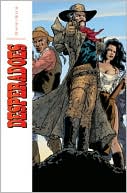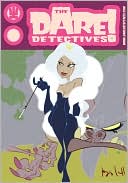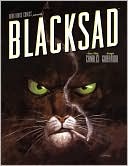Winsor McCay: Early Works, Volume 7
McCay's cartooning style, although decades ahead of its time, was popular during his lifetime. With the advent of motion pictures, McCay leveraged his public popularity as a cartoonist to introduce what he would become most famous for - animation! Hailed as the Father of Animation, McCay's static cartoons are no less vibrant and unique. Volume 7 features McCay's lavish, detailed illustrations from his New York editorial period, as well as a collection of comic strips.
Search in google:
McCay's cartooning style, although decades ahead of its time, was popular during his lifetime. With the advent of motion pictures, McCay leveraged his public popularity as a cartoonist to introduce what he would become most famous for - animation! Hailed as the Father of Animation, McCay's static cartoons are no less vibrant and unique. Volume 7 features McCay's lavish, detailed illustrations from his New York editorial period, as well as a collection of comic strips.Publishers WeeklyMcCay, one of early newspaper comics' major figures, delighted in seeing how a sequence of graphic images could lead readers to imagine reality transformed. The form best suited to that experiment, McCay found, was the dream, as in his famed "Little Nemo in Slumberland," that filled a page with glorious hijinks before returning to the waking world in the last panel. In the first section of this collection, "Dreams of the Rarebit Fiend" (1904-1914), people who have eaten rich foods have nightmares (e.g., a woman dreams her alligator skin purse becomes a real alligator that grows large enough to swallow her whole, then wakes up vowing never to overindulge again). The book also includes "Little Sammy Sneeze" (1903), whose eponymous protagonist always does his thing at the most inopportune moments; and "A Pilgrim's Progress" (1905-1910), a modern, secular version of Bunyan's tract, in which the melancholy traveler tries hopelessly to ditch his enormous valise. Readers may be uneasy with the racial and ethnic stereotypes innocently employed here (and rather strangely spotlighted on the cover), and they'll surely feel baffled when they encounter forgotten events, customs and slang (reading such old works requires as much mental gear-shifting as picking up a Japanese manga). However, McCay's art nouveau draftsmanship is superb, and it's fascinating to watch him experiment with the comics medium, as when Little Sammy's sneeze shatters the strip itself, leaving him staring at the reader out of a heap of panel surface and pieces of the border. Even in these early, relatively minor works, McCay's genius amazes and delights. (Mar.) Copyright 2003 Reed Business Information.
Chapter 1/2Dream of The Rarebit Fiend 1907AThe Weekday StripsBThe Saturday StripsChapter 3New York Editorial Period 1904 - 1917Chapter 4Little Sammy Sneeze 1904 - 1906Chapter 5A Pilgrim's Progress 1907
\ Publishers WeeklyMcCay, one of early newspaper comics' major figures, delighted in seeing how a sequence of graphic images could lead readers to imagine reality transformed. The form best suited to that experiment, McCay found, was the dream, as in his famed "Little Nemo in Slumberland," that filled a page with glorious hijinks before returning to the waking world in the last panel. In the first section of this collection, "Dreams of the Rarebit Fiend" (1904-1914), people who have eaten rich foods have nightmares (e.g., a woman dreams her alligator skin purse becomes a real alligator that grows large enough to swallow her whole, then wakes up vowing never to overindulge again). The book also includes "Little Sammy Sneeze" (1903), whose eponymous protagonist always does his thing at the most inopportune moments; and "A Pilgrim's Progress" (1905-1910), a modern, secular version of Bunyan's tract, in which the melancholy traveler tries hopelessly to ditch his enormous valise. Readers may be uneasy with the racial and ethnic stereotypes innocently employed here (and rather strangely spotlighted on the cover), and they'll surely feel baffled when they encounter forgotten events, customs and slang (reading such old works requires as much mental gear-shifting as picking up a Japanese manga). However, McCay's art nouveau draftsmanship is superb, and it's fascinating to watch him experiment with the comics medium, as when Little Sammy's sneeze shatters the strip itself, leaving him staring at the reader out of a heap of panel surface and pieces of the border. Even in these early, relatively minor works, McCay's genius amazes and delights. (Mar.) Copyright 2003 Reed Business Information.\ \








